The Ultimate Old Money Aesthetic Guide (What We Learned From Actual, Blue-Blooded, Old Money Folk)
The post The Ultimate Old Money Aesthetic Guide (What We Learned From Actual, Blue-Blooded, Old Money Folk) appeared first on Effortless Gent.
The terms “Old Money” and “Old Money Aesthetic” have been getting thrown around on social media a lot lately, mostly on FashionTok and Fashion Insta. Typically, it’s a video filled with tips and examples of how to dress in an “old money” style.
But what exactly does Old Money mean? How, when, and where did the term originate? And most importantly, why are teens on TikTok trying to emulate the style of old money types?
So if you’re curious about what Old Money actually is (and isn’t), read on. This is the most accurate article you’ll read about “Old Money Aesthetic” as it pertains to men’s style—we consulted with actual, real world, blue-blooded old money gentlemen to get the actual scoop.
And as usual, if you want to jump around, use the Table of Contents below. Let’s get into it!
What You’ll Learn: A Summary
- Old money style isn’t about flexing with brand names; it’s quality over quantity, classic over flashy—think less Balenciaga and Prada, more Brooks Brothers and Polo.
- To rock the old money aesthetic, channel the leisure activities of the old money set—horse-riding, polo, racquet sports, Ivy League parties—and translate it into your wardrobe with timeless pieces like tennis whites or cable knit cashmere sweaters.
- Remember, comfort is paramount in the old money aesthetic—skip the super skinny or oversized gear, and keep branding on the down-low, except for the occasional piece of statement jewelry or a tasteful
watch . - It’s important to dress appropriately for the occasion—sporting the right hunting gear for a game chase, mastering laid-back elegance on holidays, and pulling out a sharp tux when formality calls.
- When it comes to brands, go for ones that whisper rather than shout: Brooks Brothers, Burberry, J.Press, Ralph Lauren, or for the ladies, Chanel—high quality without logo overload.
- Don’t fear color, but don’t go overboard, either. Remember balance (and being understated) is key—think a splash of Nantucket red anchored with neutrals.
- Mastering the old money aesthetic is a balancing act: start with a basic outfit, then make a few savvy swaps that include classic, preppy elements, making sure your style stays authentically yours.
- New money? Old money? They’re two different worlds, style-wise. Old money is all about tradition, quality, and discretion, while new money often leans towards bold trends, out-there outfits, and conspicuous logo displays.
- Remember that the old money aesthetic extends beyond clothing—it’s also about portraying a certain level of reserved class and sophistication in your behavior and interactions with others.
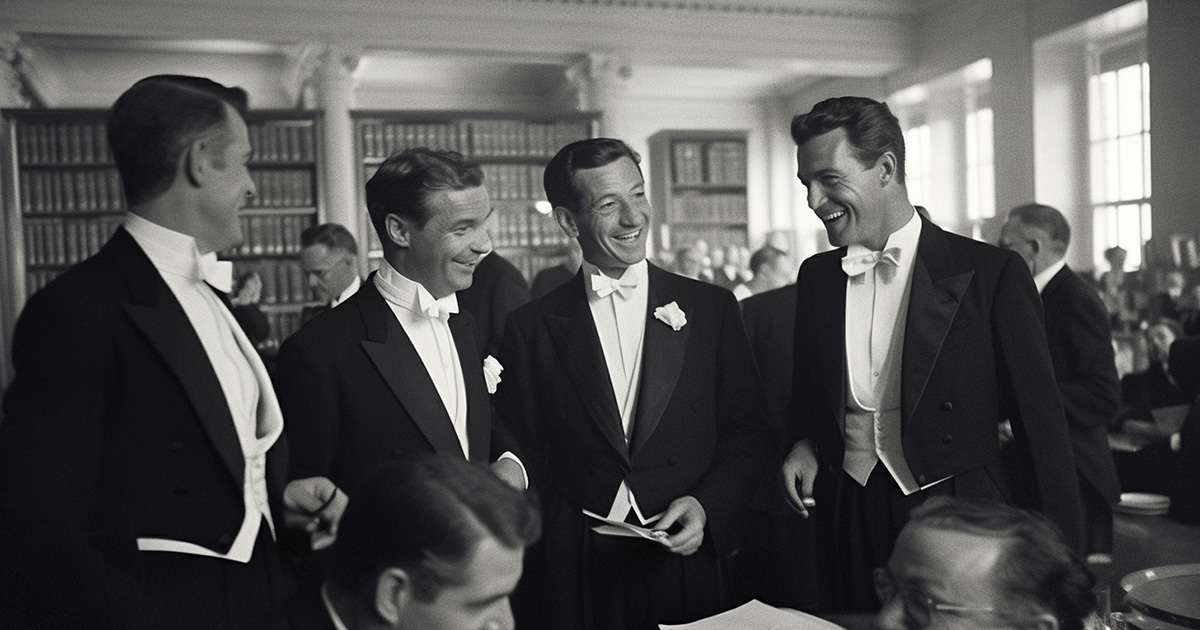
What is “Old Money”?
Technically, “Old Money” means someone who inherits wealth instead of generating it for themselves. Still, this doesn’t account for the actual style of the “old money aesthetic” we’re seeing on social media. Hollywood nepo babies have a different style than, say, the Cavendish family does.
So, think of inherited wealth as the initial qualification.
The next qualification, then, is someone whose family has roots in the founding of an important establishment in their greater community.
In America, that’s people who can trace their roots back to the Mayflower times, whose family has lived on the East Coast long enough to make a fortune, lose a fortune, and make it back (even if not all of it). In England, it would be the landed aristocracy, so on and so forth.
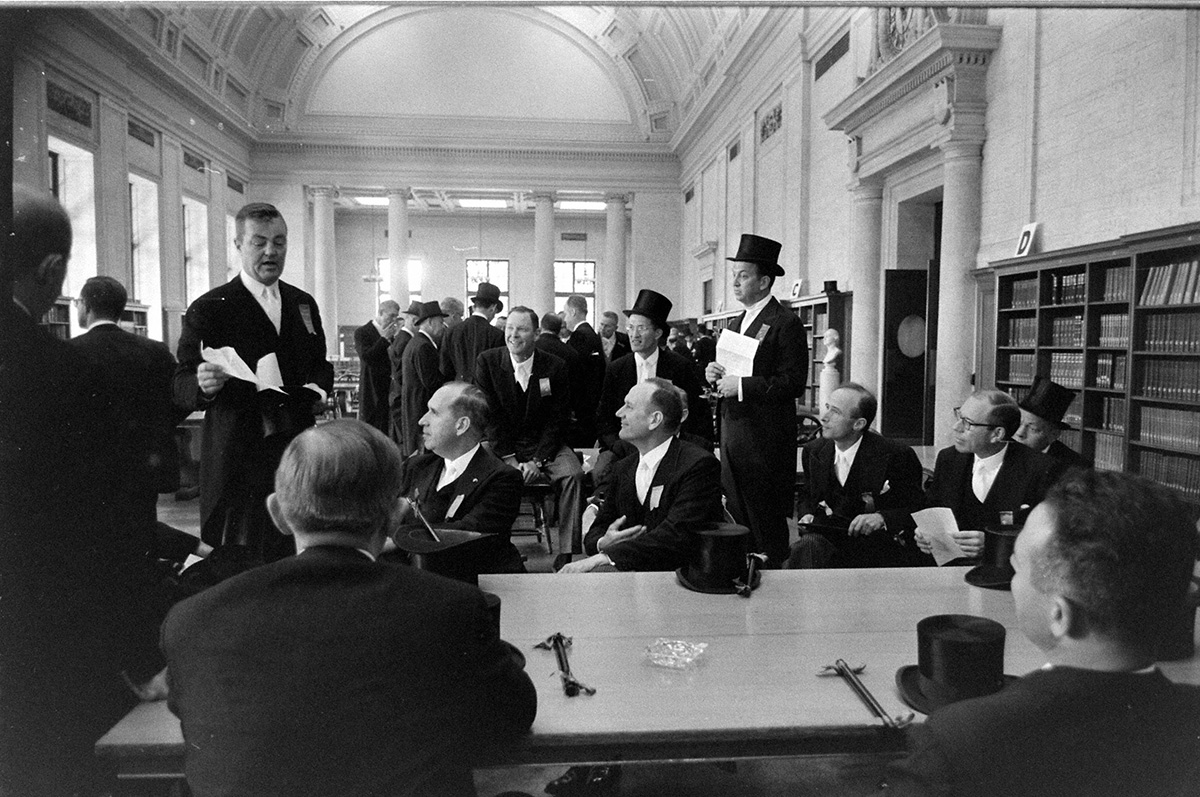
This is related to a fact about old money not always depicted in television shows and movies: They’re typically not as rich as new money. My mother is a certified Connecticut WASP and Yale legacy. She’s always said, “Richard Branson, after all, is richer than the Queen.”
Basically, you’re more likely to see a true old money person’s surname on town hall buildings and Ivy league dorm houses, not on the stock ticker—not necessarily, at least.
Other terms related to this brand of old money are blue bloods, WASPs (White Anglo-Saxon Protestants), Brahmins, and preppies.
So how do we generate a look and style from this subculture?
To find out, you have to dig into a little bit of history and culture: What these people did for work and play, and where they did it.
I did a deep-dive into this culture, both in the academic sense and by analyzing actual old money types, even talking to a few in their natural habitats.
What’s the Old Money Aesthetic And Style?
How Work and Play Affect the General Aesthetic of Old Money
If I were to ask you what you think blue-blooded, old money types do for work, what would you say? I get a lot of, “He’s probably on Wall Street and she probably writes for Town & Country.”
This is possible.
More likely, they do that on top of their real jobs, which is more along the lines of gentleman farmer and landowner, or classics professor at an Ivy. She might be a part-time gallery girl or equestrian.
I spoke to a friend who’s a legacy at Phillips Academy and Harvard, and he concurred, mentioning his father only worked a decade in banking, so he could focus the main part of his adult life tending to his estate, sailing, and teaching French Literature.
I’m paraphrasing, but John Adams once said that he studied politics and war, so that his kids could study math and philosophy, and so that their kids could study painting, poetry, tapestry, and porcelain.
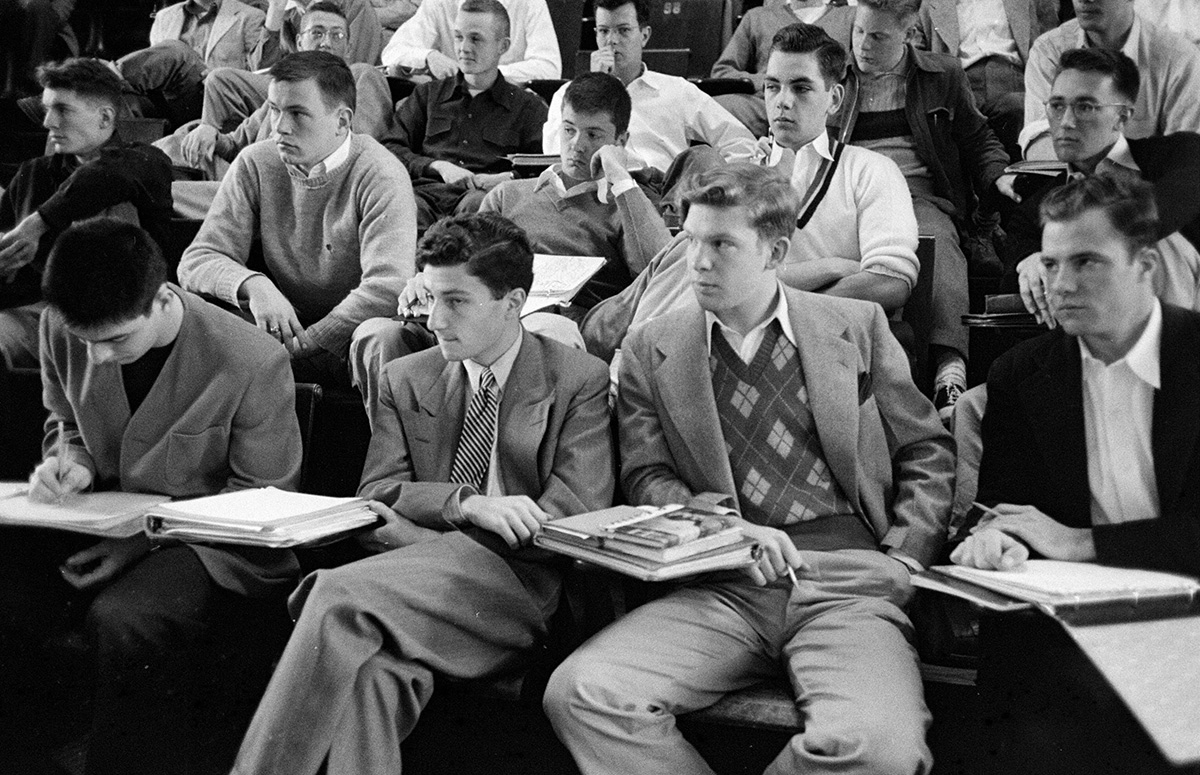
The key ingredient to old money aesthetic is the concept of leisure. That’s why you see a lot of tennis whites, riding boots, and hunting jackets.
Another key ingredient? Being understated. Or more importantly, anti-flashiness. So as much as a Vuitton belt with the LV as the buckle flaunts one’s disposal income (or credit card bill), it’s not “old money aesthetic.” Other associated terms include “quiet luxury”, “covertly luxurious”, and “trad.”
Creams and neutrals are staples, as are lighter pastels during warm seasons, while primaries are common accent colors.
Places associated with old money, as we’ve narrowed it down here, include old private schools in Old and New England or continental Europe, Ivy League universities, old social clubs and athletic clubs (Somerset Club, not SoHo House), holidays in places like Nantucket, and simple beach houses with a lot of beige.
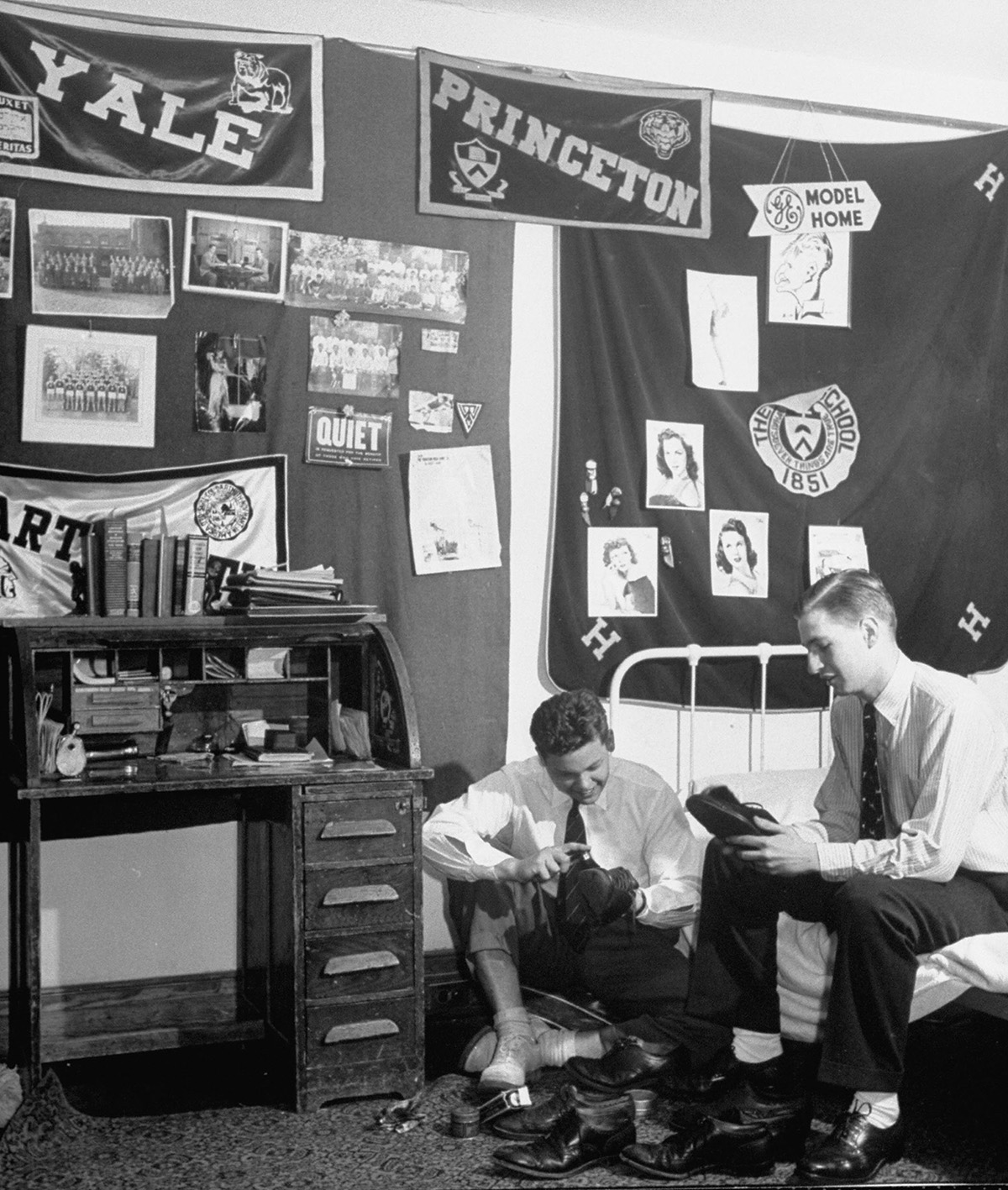
Activities they’re associated with include equestrianism, croquet, tennis and other racket sports, hunting, boating, and often just enough of the arts without going Boho. At boarding school and college, they probably played rugby, polo, or lacrosse over basketball or wrestling.
Old Money: Essential Garments and Accessories
There’s an age-old event at Harvard called “punch season.” It’s when the old social clubs on campus slip letters under the doors of those selected to possibly join one or multiple clubs. These letters are invitations to attend “punch” events.
When I attended these events, I saw a lot of navy blazers with club ties,

Old money style is a bit like a uniform. It’s rooted in tradition and practicality, and there are tried-and-true go-tos for specific dress codes.
Casual Go-To Pieces for the Old Money crowd
- Cable-knit sweater
- Khakis
- Cardigan
- Knit polo
shirt - Rugby
shirt - Hunting jacket
- Madras shorts
- Red chinos aka “Nantucket Reds”
- Linen pants
- Linen button-up
- Low-profile all-white leather sneakers
- Loafers
- Boat shoes
- Turtleneck
- Seersucker pieces
Notice that all of the casual pieces are rooted in some activity of leisure associated with the lifestyle. A nice t-shirt and good jeans, even of the highest quality, certainly say that you have style and that you’re discerning, but it isn’t specific to old money.
All of these pieces are related to the prior-mentioned activities associated with this subculture.
Now, I’m not saying that the old money aesthetic completely omits casual staples like t-shirts and jeans. They’re what I call “conditional casual go-tos.” Meaning, there’s a certain way to wear them that does imply the old money lifestyle.
Here are a few pieces you have to wear very specifically.
Conditional Casual Go-Tos
- Baseball cap
- Crewneck sweatshirt
- T-shirt
What do I mean by conditional?
So first, not any sweatshirt or baseball cap will do. Again, go back to the places and activities that imply this specific lifestyle.
One good example is a

Of course, it’s advisable to rep clubs and schools you’re actually legitimately associated with. If your dad boarded at Eton, but you didn’t, that’s okay—legacies count. At least, that’s what I was told by an actual Etonian that I spoke to at a ceremony celebrating King Charles’ coronation.
Associations and memberships aside, anyone can wear a fitted T-shirt with nautical stripes on it. Anyone can also wear a Martha’s Vineyard Sweater, or a cap with a Ralph Lauren polo pony on it.
You don’t actually have to be the type who goes pheasant hunting in the fall to wear a hat or slippers with an embroidered hunting dog or ring-necked pheasant on them.
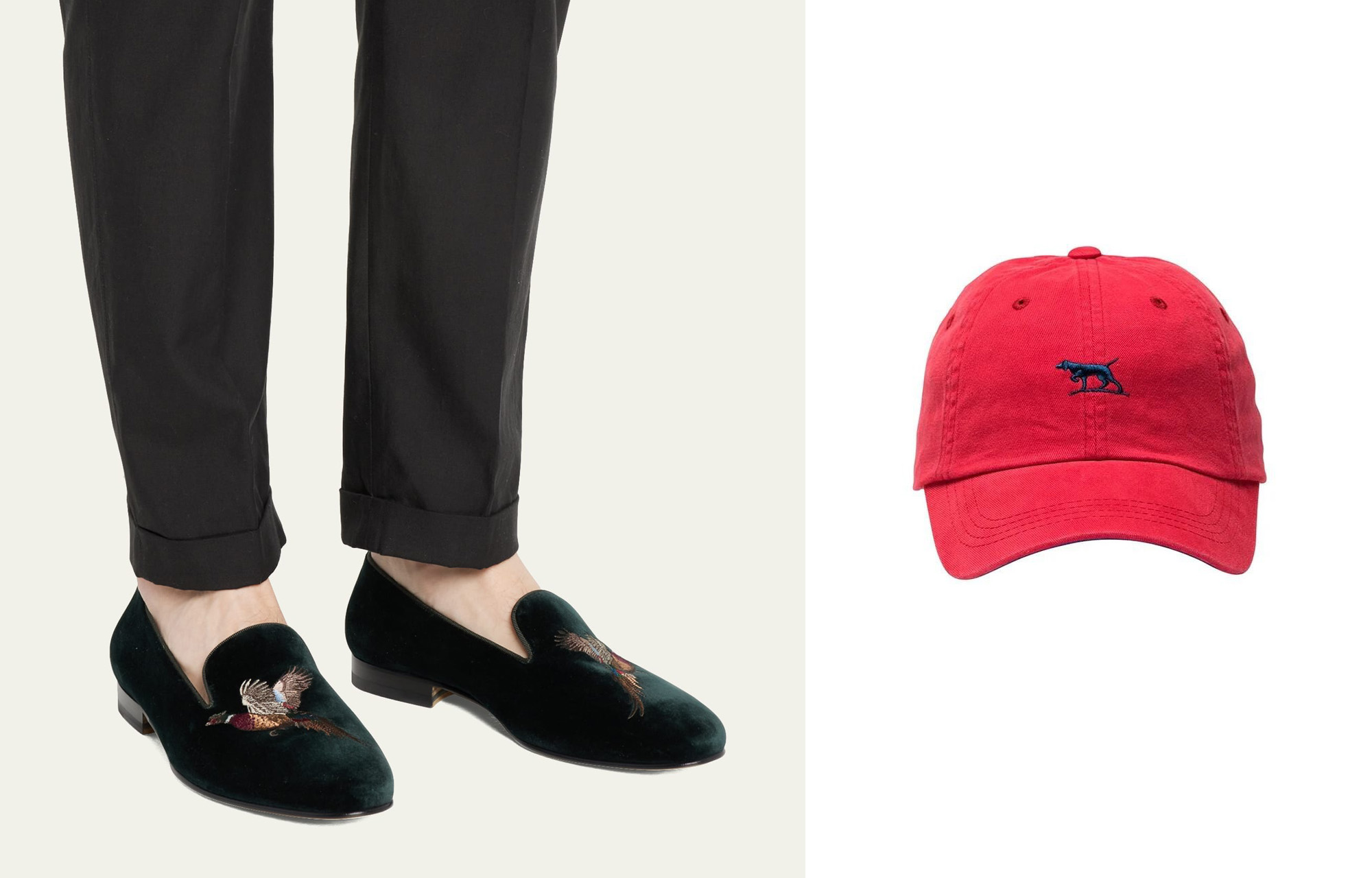
Second thing to consider is how to style these pieces.
Want to wear a simple blue T-shirt on a hot summer day? Then style it with linen trousers, clean boat shoes, and a luxury dive
Another possible casual combo is topping a quilted hunting vest and
Okay, next up are the smart casual go-tos, which will have overlap with the casual essentials:
Smart Casual Go-Tos For Old Money Folk
- Oxford cotton
button-down shirt (OCBD) - OCBD,
button-down version (meaning the collar points can be buttoned down) - Sweater vest, cable-knit and cashmere
- Cashmere sweater
- Cardigan
- Navy blazer
- Khakis
- Nantucket Reds
- Suede Loafers
- White chinos
- Nantucket reds
- Turtleneck
Smart casual outfits in the old money world are more straight-forward than casual ones, but you want to lean harder into the smart side of things. Always opt for a blazer rather than not.
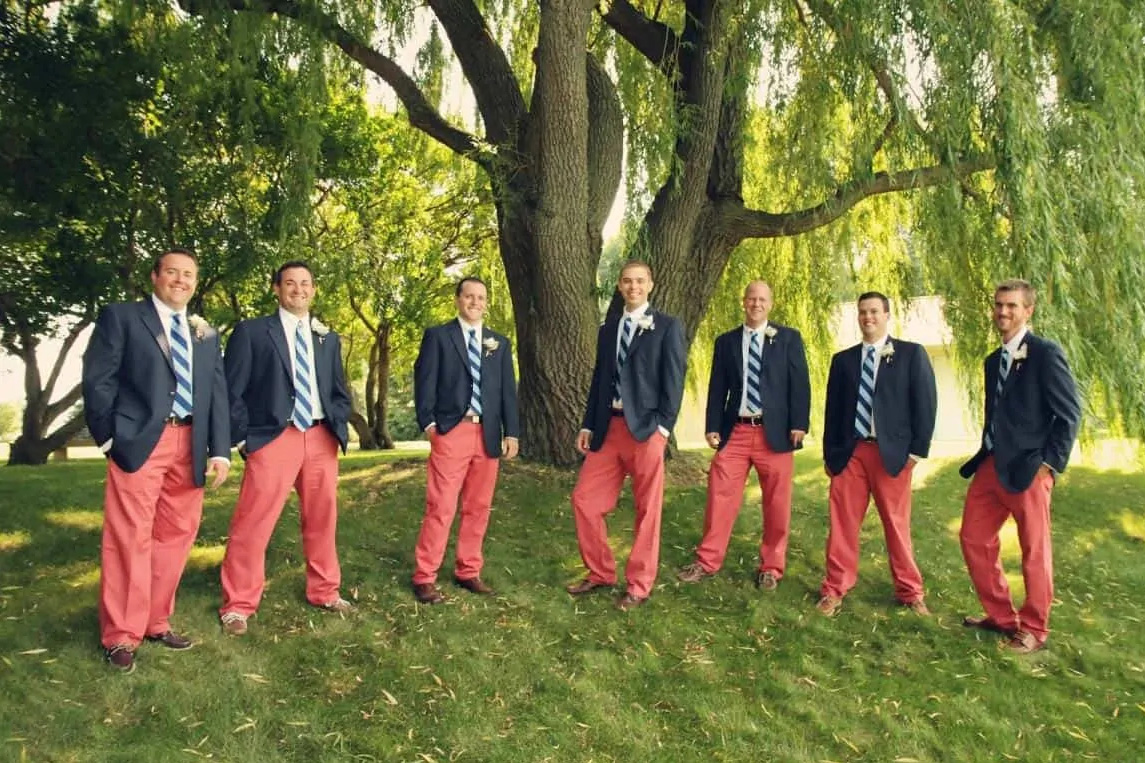
x Something you’ll notice about old world style, in general, is that “smart casual” tends to be its nucleus and all dress codes to each side kind of lean into it. That’s why there’s so much overlap between the casual and smart casual essentials.
Basically: The casual outfits try to be more dressy than typical casual combinations, while formal outfits try to look more relaxed.
It’s all about leisurely, effortless elegance.
Old Money Formal and Professional Go-To Pieces
- Full suit
- Tuxedo
- Something to make the outfit more casual that doesn’t break the rules (old world style is all about rule-following)
Here’s a real-life example of what I mean by that last point.
I have three good childhood friends who 100% fulfill the genuine old money prerequisites. Let’s just say one of them has a building at Yale named after his family.
All of our grandfathers worked together, and I have a distinct childhood memory of one of my friends pulling out an old company photograph. Though there were about 20 men in full suit-and-tie attire in the picture, you could easily point out our grandfathers. Each of them were wearing a white V-neck cable-knit sweater vest under their suit jackets.
In their cases, the “casualizing” came from a garment made for rowing and tennis, and using it in place of an actual, more formal suit vest.

A more common way to make a full suit more casual that doesn’t break the rules might include wearing suede loafers as dress shoes.
The most ubiquitous example is the previously-mentioned blazer-tie-khakis combo. It’s essentially the preppy broken suit.
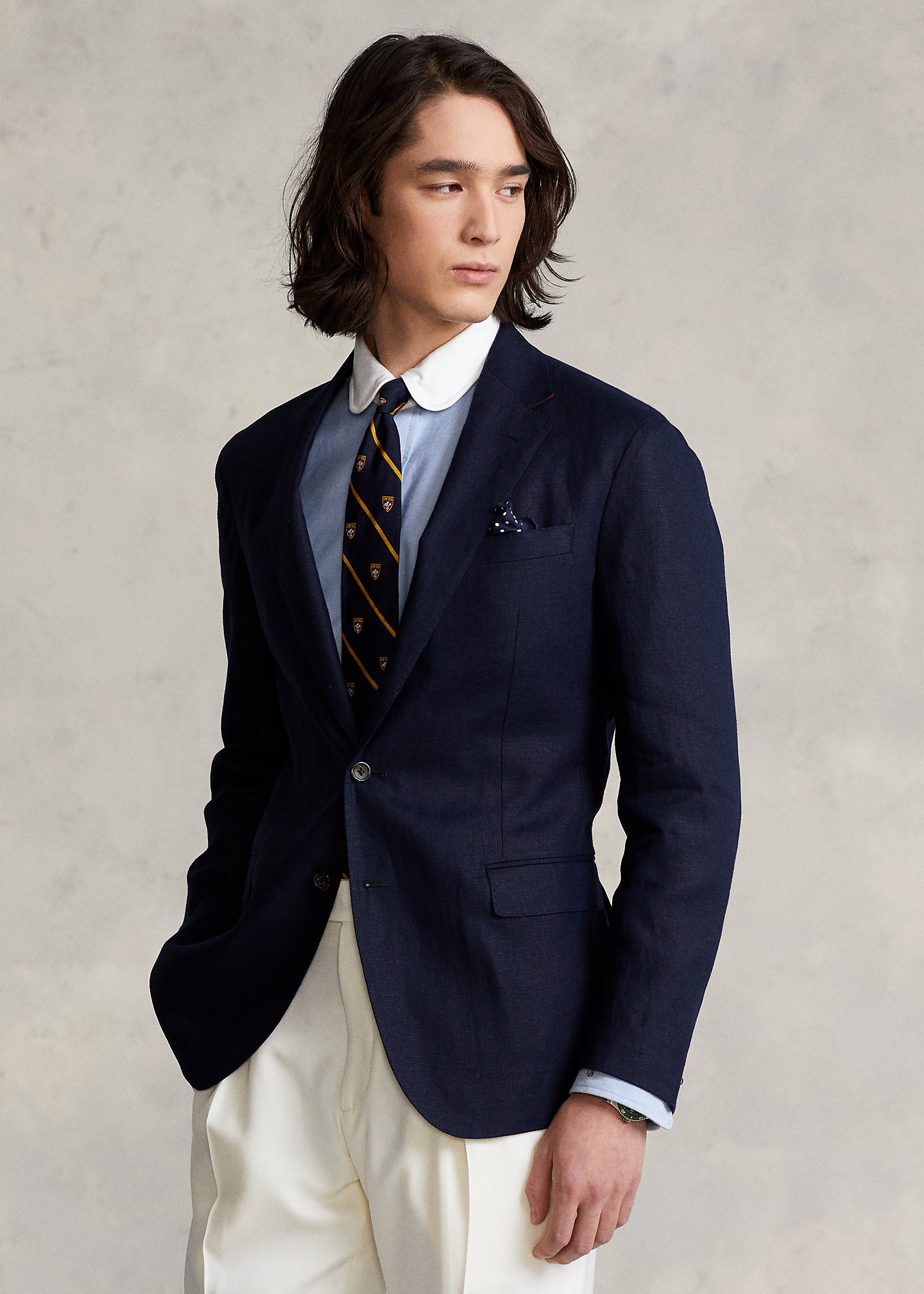
So how would you make a tuxedo more casual?
There aren’t a lot of options for this, because the old money aesthetic is already built into black-tie formal. And, old money traditionalists are one of the few camps who still regularly attend strict black-tie occasions, so no one’s coming in and changing it too much.
Think about it, a slipper in any other context is considered a casual shoe. But when it comes to black-tie dress shoes, the slipper is the most minimal and therefore the most formal—an opera pump, for example.
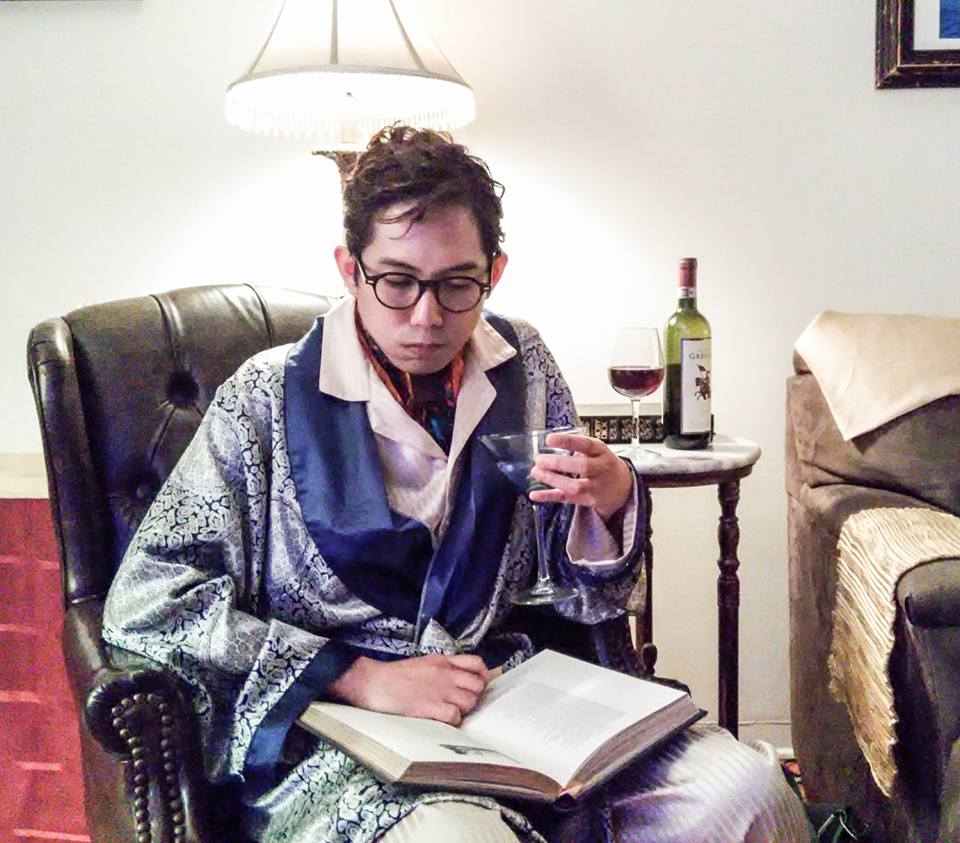
Similarly, a shawl lapel, the most formal tuxedo lapel, looks suspiciously like the “lapel” of a house robe or smoking jacket.
One option is, on certain formal occasions, you can wear a
Traditionally, truly formal occasions meant you don’t wear
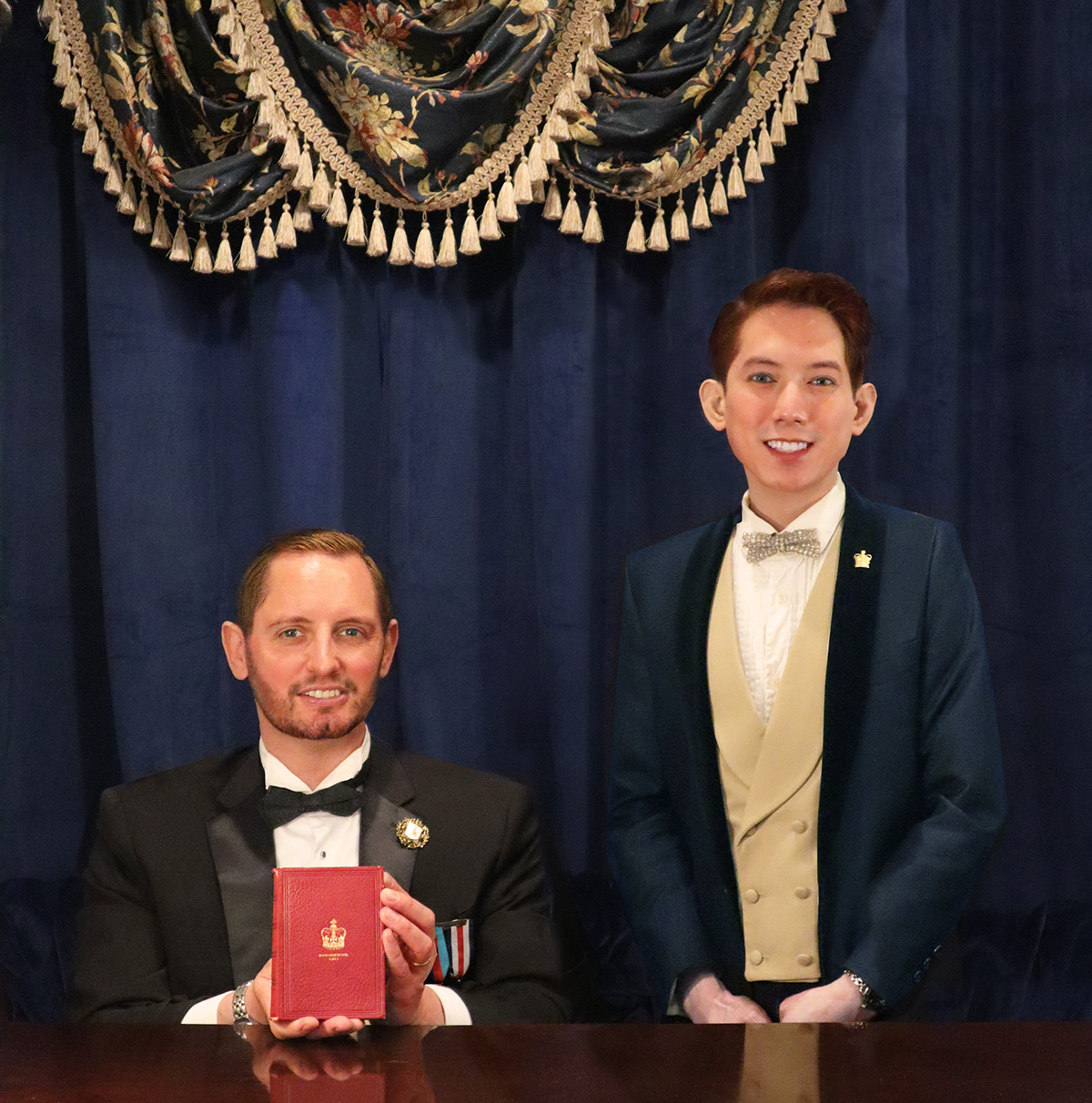
When James Bond first wore a Submariner with his dinner jacket in the ‘60s, most of the style gurus thought it subversive. Old money people probably saw it more as a wink and a nod.
Real life, contemporary examples include James Matthews wearing a
Accessories and Seasonal Pieces
- Wayfarer sunglasses, aviator sunglasses, round tortoise shell sunglasses
- Leather belt
- Ties (club, plaid, crested, knit)
- Dress
watch - Sport
watch - Family heirloom (it could be any of the other items on this list, or something extra, like a lapel pin)
- Trench coat
- Peacoat
- Wellies
- Duck boots
I would say accessories are the one thing old money goes “flashy” with.
I don’t mean they’re sporting huge dial faces with tons of diamond bedazzling, but they definitely embrace the Rolexes, Pateks, and Omegas of the world.
Then and Now: Making Stodgy Stylish
There’s a relationship between how old money style is depicted through the lens of social media, and how it’s changed from generation to generation, even within real old money families.
(Side note: The #OldMoneyAesthetic hashtag on TikTok alone has 2.6 BILLION views… but most of those videos only touch the surface, or get it partially right.)
Let’s unpack the latter to understand the former.
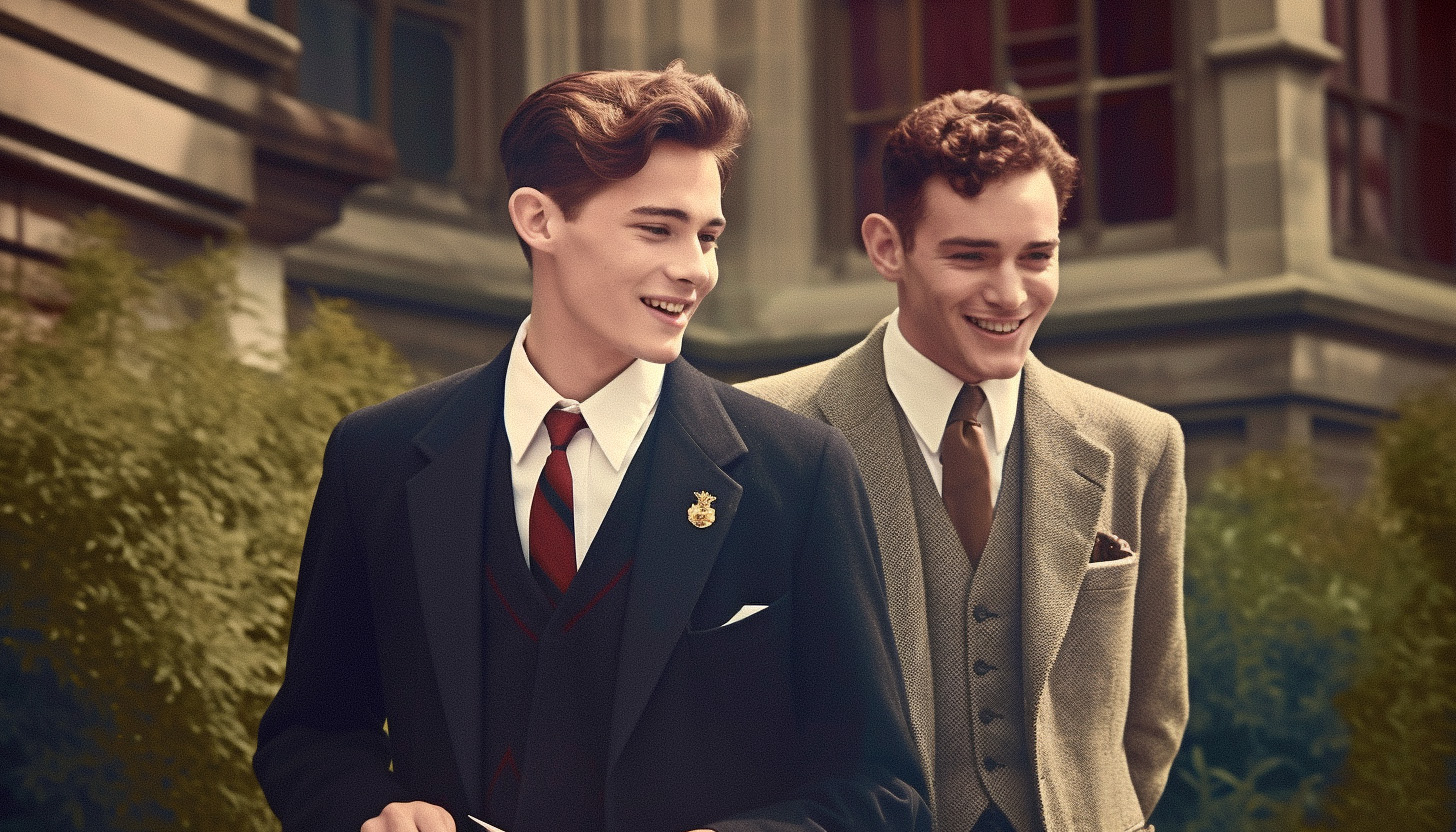
Old Money Style = Quality First
First off, as you’ve probably gathered from the deep-dive into old money essentials, this culture’s style isn’t actually “stylish”. Yes, fashion is subjective, but their aesthetic isn’t particularly expressive, it’s not terribly colorful, and it’s not “fun.”
You might even call it stodgy or musty. One objectively good thing about this, is that there’s a focus on quality. It’s craft over fashion. They wore and handed down handmade leather goods, automatic
So when implementing your version of “old money aesthetic” even as it’s been remixed by social media, one thing you can take away from real old money practices is focusing on quality over quantity.
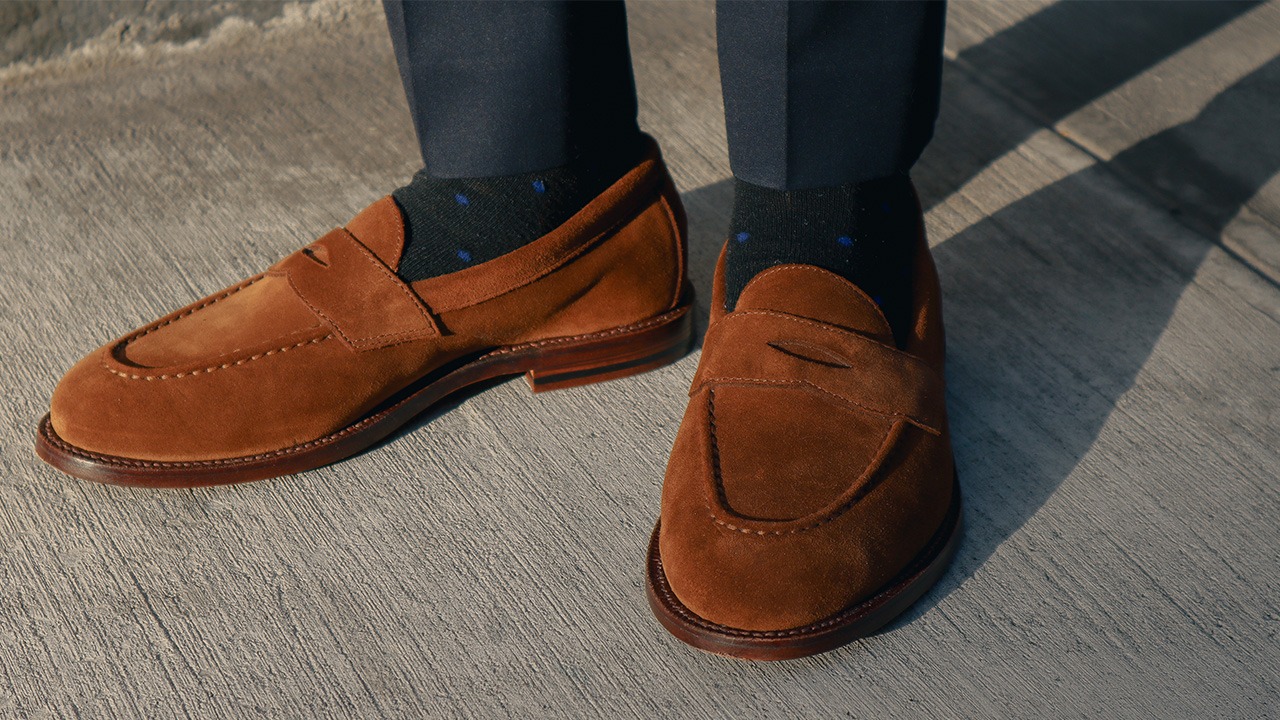
Wearing the same Goodyear-welted, full-grain leather loafers with every outfit is better than having several mid-quality shoes. Remember: There’s something uniform-like about the way they dress, with a focus on go-tos.
Again, the Prince of Wales has literally only ever been seen wearing one
The Old Money Family: Younger vs Older Generations
Let’s look at a hypothetical old money family. Obviously, no one family is exactly like the other regardless of whether they’re old money, new money, or anything else.
Think of this hypothetical family as a composite of common practices. The youngest guy of the latest generation isn’t necessarily looking to his father or grandfather for style. He’s also not as offended by flashier looks.
Eventually, when he gets older and enters the family business, or joins the social clubs he has a legacy in, he might start to look more like his father, but he’ll probably take some of the flashier elements with him.
This is a tale as old as time.
Popular Culture Styles Adopted By Old Money Youth
Preppy youth in the ‘60s saw the rise of bold and colorful patterns, which translated into madras becoming a major staple for all ages.
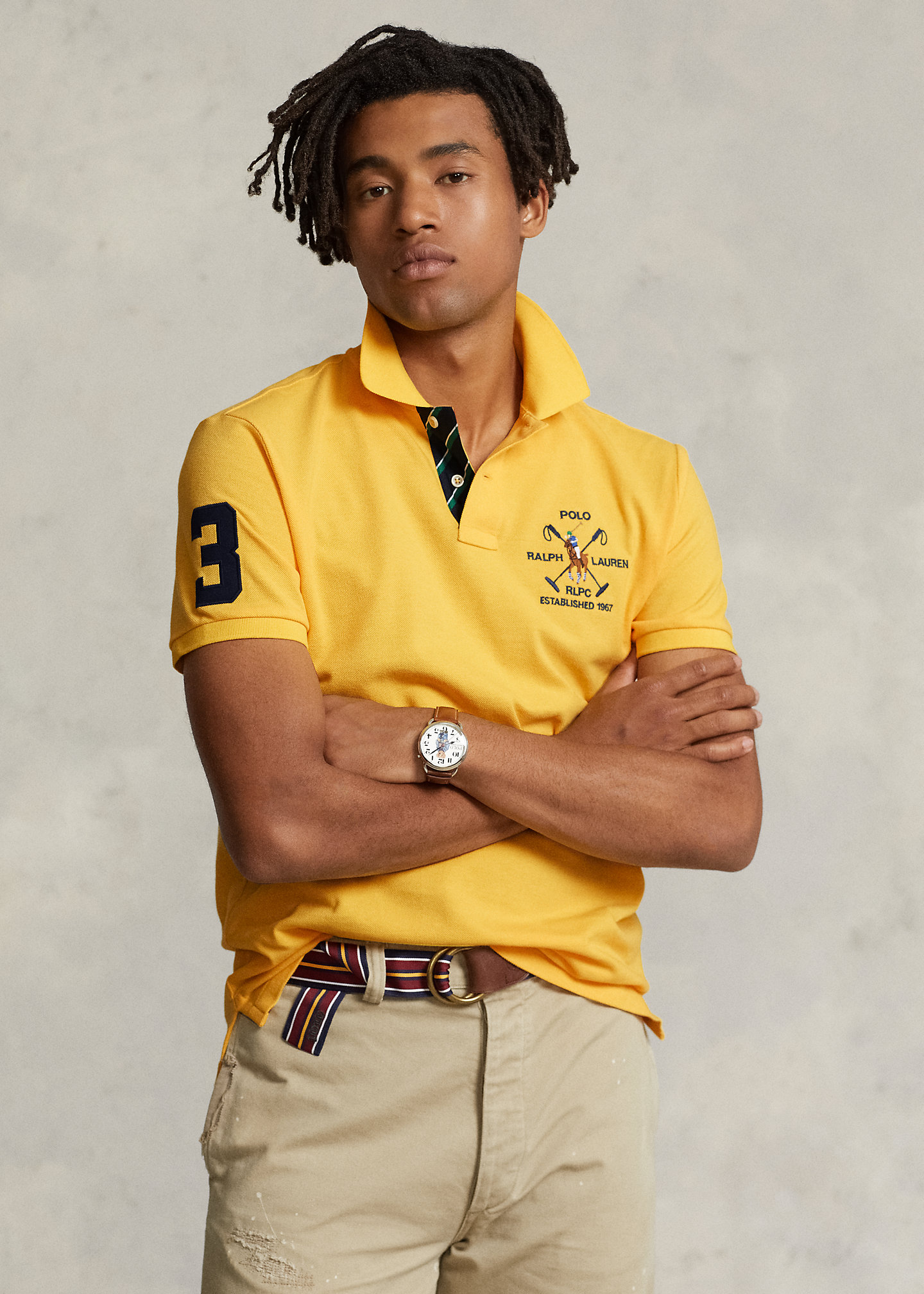
In the ‘80s, the neon craze made bright, popped-collared polos popular among the Ivy set. They didn’t keep popping their collars as they got older (unless on the polo field), but the golf course probably got a lot more colorful.
Younger Generations Mix It Up
Obviously, younger generations dress in contemporary cuts and fits too. Another thing younger generations do, is they may take from the same toolbox as their dads and grandads, but they might mix things up in a more modern way. This, by the way, is also something very prevalent in the “old money aesthetic” under the social media filter.
For example, the grandfather in an old money family wore white sneakers on the tennis court. He wore a full suit to work, and swapped out the trousers for
His grandson might instead wear the low-profile white leather sneakers on casual Friday with his suit, something grandpa would never do.
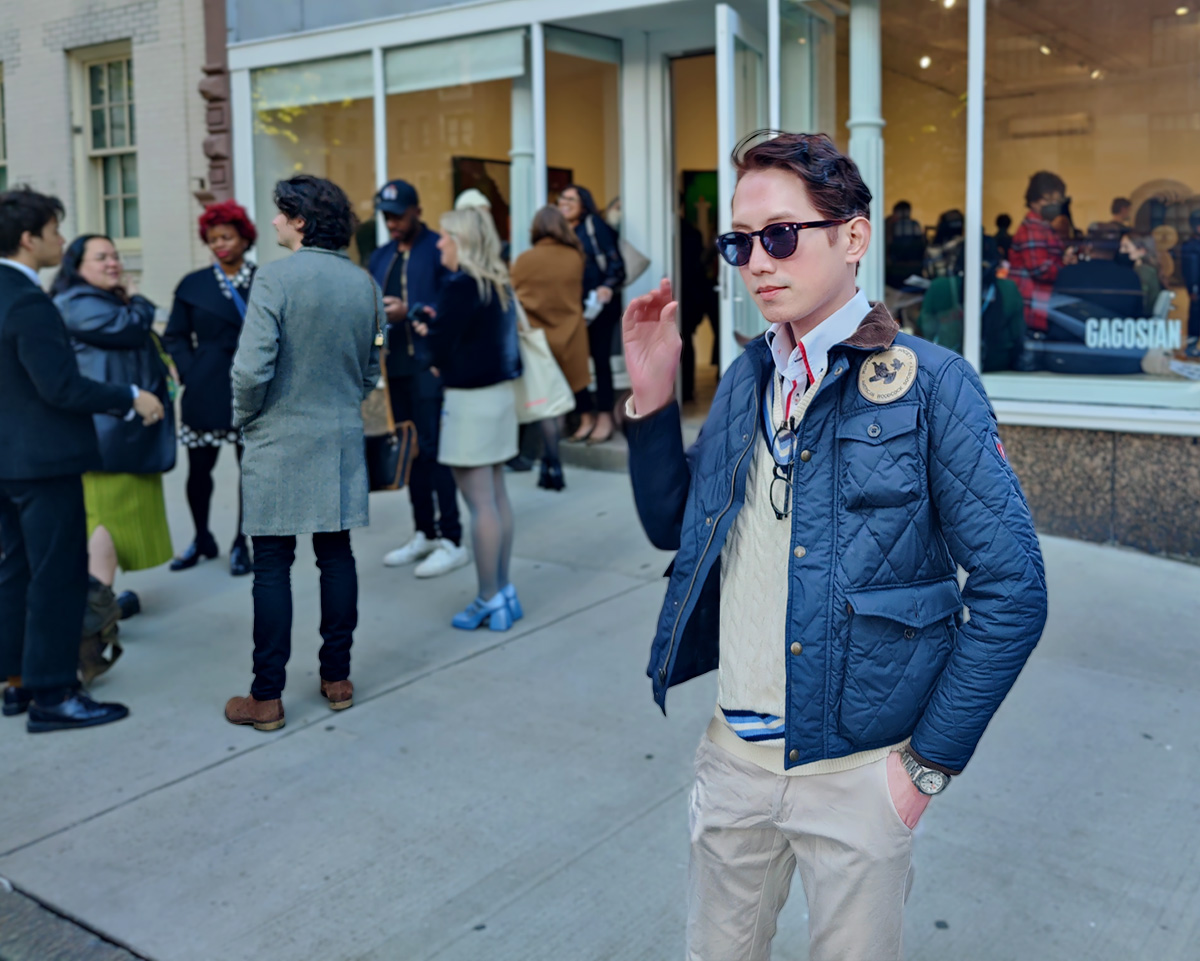
An old college friend of mine, a high WASP who can trace his lineage back to the initial Dutch ships to arrive in Manhattan, told me that his father was appalled at him when my friend would wear his sneakers with his
The relationship between the generations is a bit like the one between Ralph Lauren and Brooks Brothers.
Ralph Lauren came out emulating Brooks Brothers, but in a less traditional, arguably flashier way. In fact, Brooks sued RL in the ‘70s claiming they ripped off their
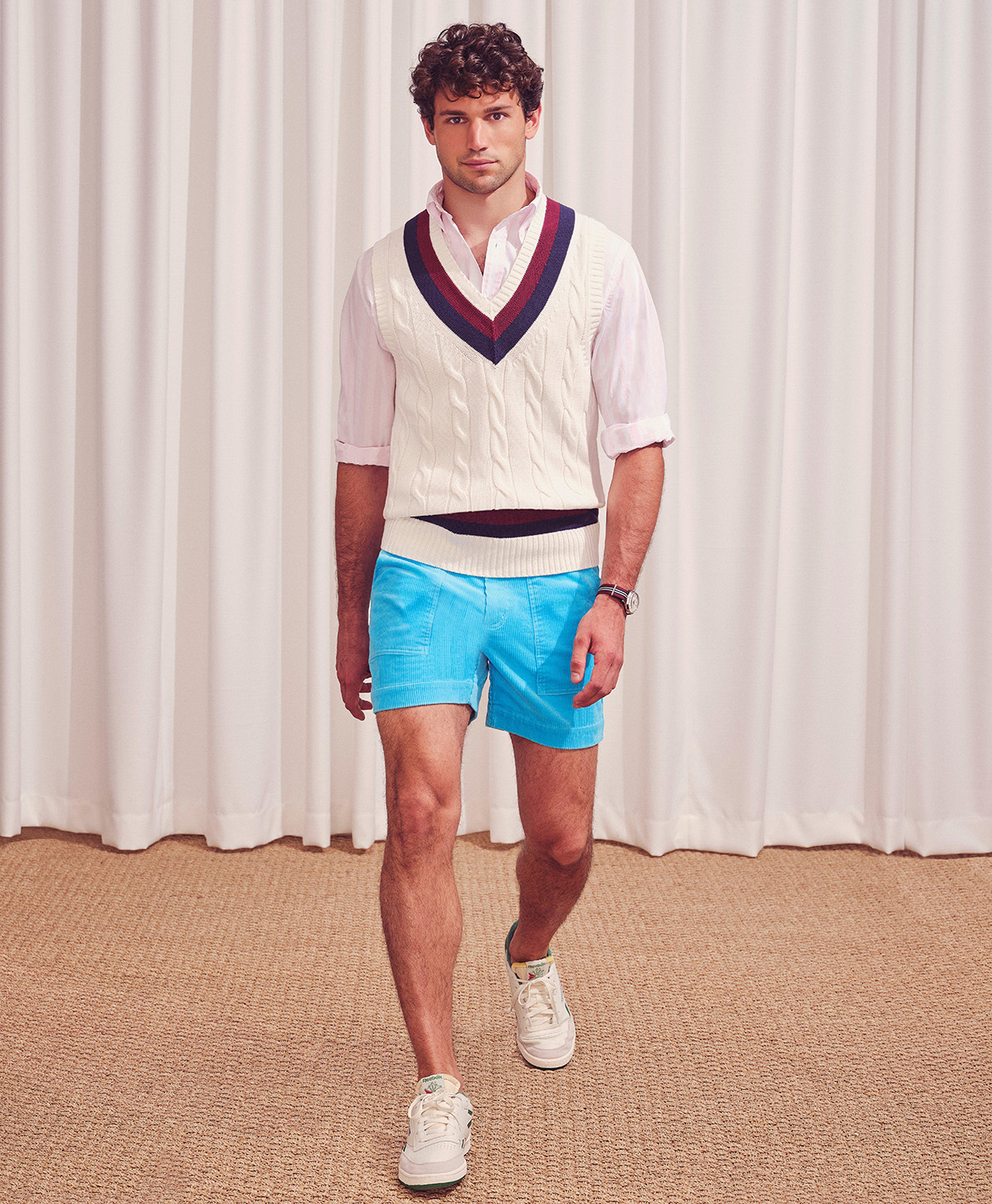
Ultimately, Brooks is still more traditional than RL, but there’s definitely cross pollination between old and new.
What About Designers?
One thing real old money and the old money aesthetic on social media have in common is its relationship to brand name designers.
Ultimately, they don’t matter as much as the quality of the pieces. Typically, you want more low-key designers, and you don’t want to flaunt it. No Gucci Gs, no Balenciaga pull-overs.
Core Burberry lines, Brooks, and even Ralph Lauren are good brands to turn to, simply because the former shaped the old money sartorial culture, while the latter purposefully turned it into a curated lifestyle. Still, you don’t want overtly branded pieces.
Chanel is a Fashion-with-a-capital-F designer associated with old money, especially for women.
When it comes to fashion houses, French designers are more heady, while Italian designers are more heart. You want the former, not the latter. More monochromes and less paisley.
What the Old Money Style Isn’t
So at this point, you probably understand that old money aesthetic is all about practicality and being understated. Here are some common misconceptions of old money aesthetic you might come across on Tik Tok or Insta.
You almost never suffer for fashion. That’s not practical, after all. This means no super skinny pants or outrageously oversized clothes, no matter how on-trend they are.
Avoid overly aspirational looks and pieces, with the exception of
If it’s something someone might say is overly “bougie” then it’s not old money aesthetic. This isn’t as important these days since there’s a lot of overlap, but “bougie” comes from the term “bourgeoisie” which refers to the upwardly mobile upper middle-class, not the culturally quieter old money set.
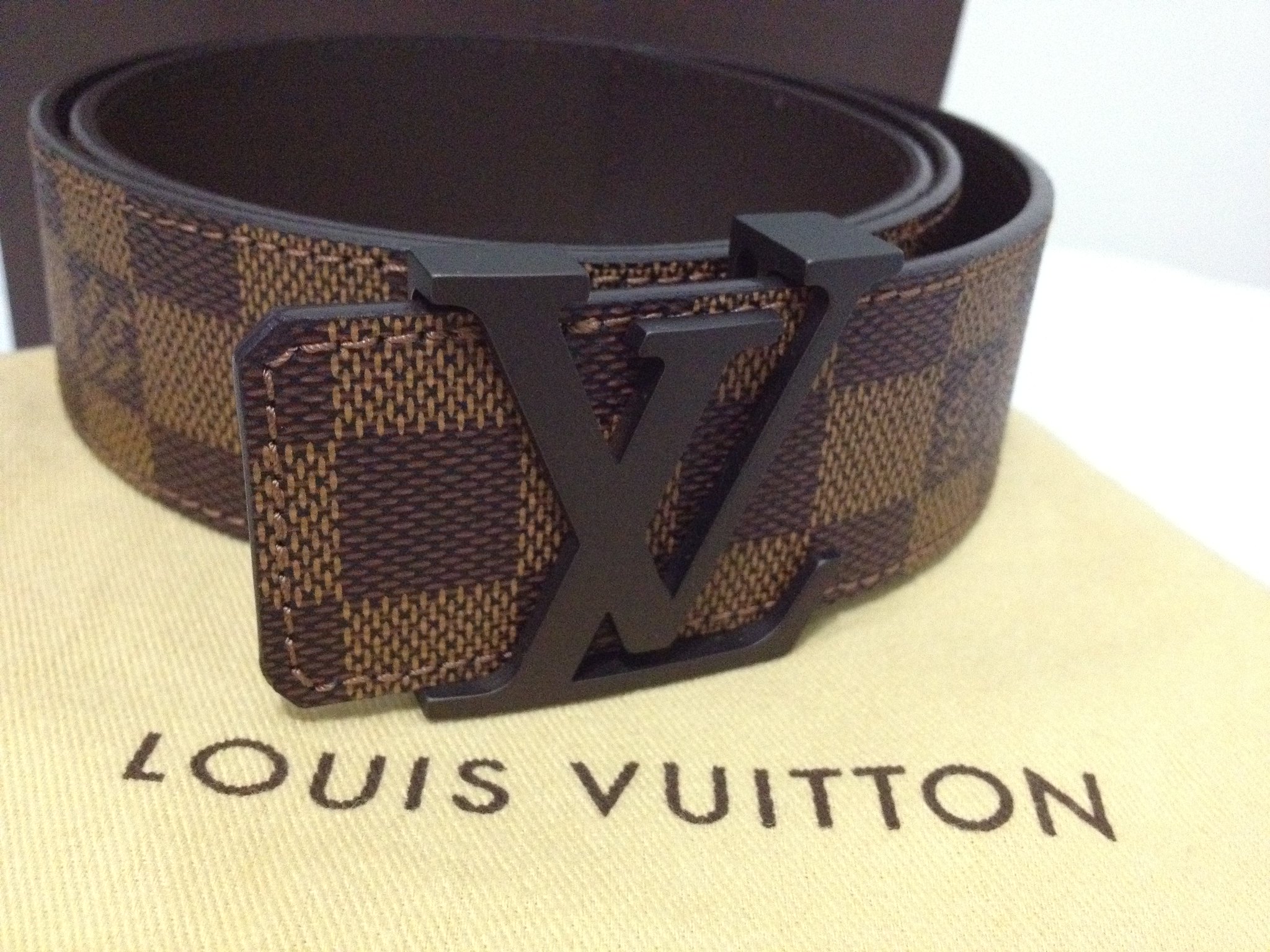
Relatedly, and with apologies to Kendall Roy from Succession, unnecessarily expensive baseball caps are more hypebeast than old money.
Dandier accessories and garments need to be worn at the right place at the right time. Don’t wear a cravat unless you’re actually at the Kentucky Derby. Unless you’re going to a ceremony where it’s truly required, a top hat is too costumey.
While holidays sailing on the French Riviera is something old money types might do, it’s not something they’d ever make a spectacle of. Instead, they might mysteriously always have just a bit of a tan.
There are a few instances on socials of “old money aesthetic” where loud colors are overused. This isn’t as common as the prior missteps since, for the most part, we all associate the aesthetic with more understated looks.
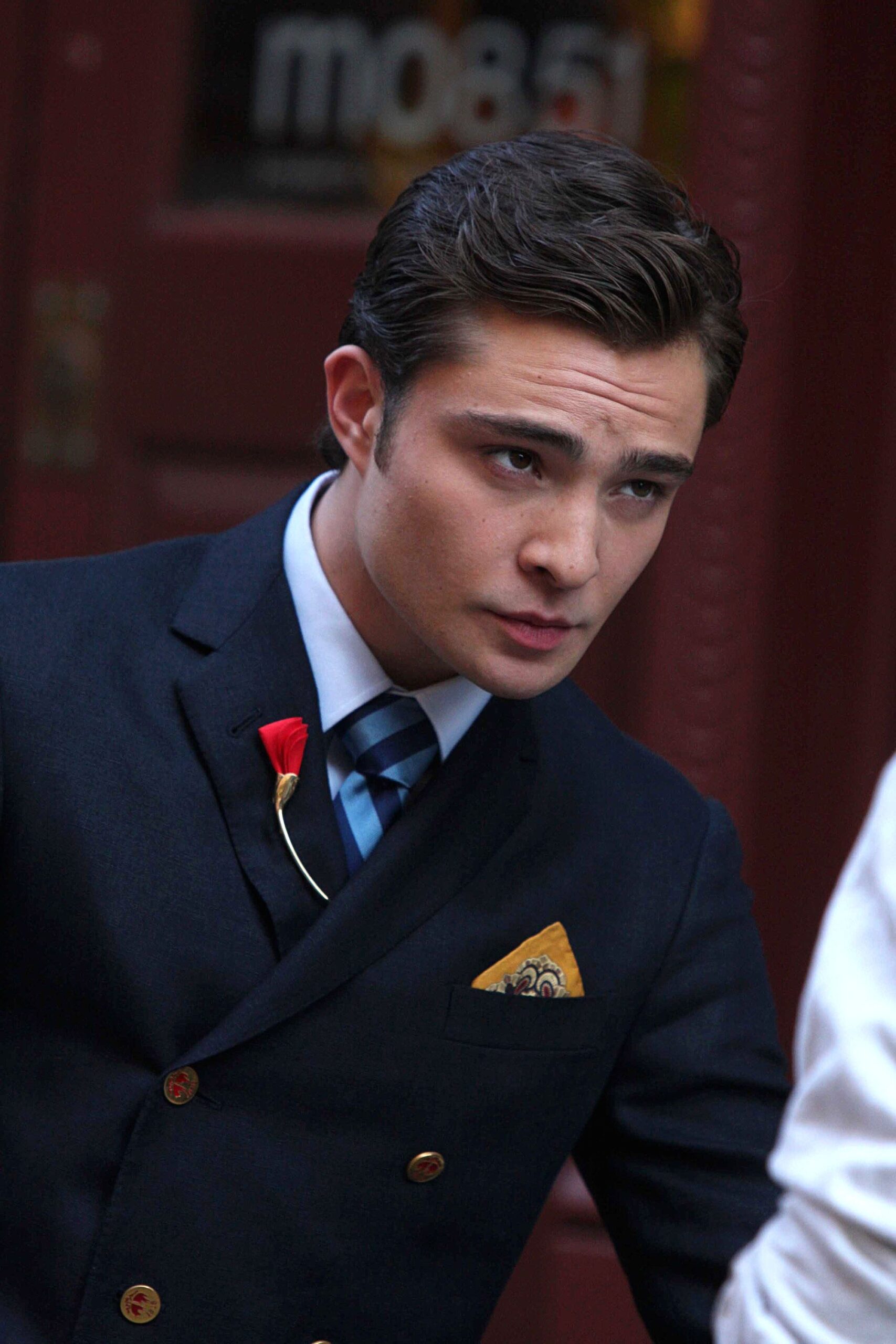
However, neo-prep in the post-Gossip Girl age allows for careful and tempered use of brighter colors. If you’re going to wear Nantucket red or Princeton orange, balance it out with neutrals.
Old Money Aesthetic: How To Actually Pull It Off Well
Okay, so now that you have the tools and the background, here’s how to implement them.
The important thing is to have no pretenses and to be confident in what you’re wearing and how you present yourself.
I may have thrown a lot of rules and cultural mores your way, but just remember that you can come at it thinking of “old money aesthetic” as just that—an aesthetic goal, not a lifestyle to emulate, and certainly not a lifestyle to fake if it isn’t truly your lifestyle.
Start with a simple, neutral (maybe even stodgy?) template for your outfit, then make two switches, taking from the “preppy essentials” toolbox.
Here’s a general, casual example. Start with a straight-forward tennis outfit. Let’s say, a white polo
Maybe you prefer contrasts to monochromes, so you swap out the tennis shorts for cuffed chinos in navy or crimson. Then, perhaps the athletic look isn’t for you, so you swap out the sneakers and socks for suede loafers and no-shows. Feel free to throw a cashmere sweater over your shoulders in case it gets cold.
I previously mentioned the tennis-ified full suit my grandfather wore, and it’s the perfect example of the double-swap strategy. Take a full three-piece suit with traditional Oxfords. Replace the vest with a cable-knit sweater vest (or a v-neck cashmere sweater vest), and swap out the Oxfords for some loafers.
You can also use this strategy to make an outfit a little more fun and youthful.
You can take a full suit, then replace the suit jacket with a rowing blazer and the shoes with white sneakers.
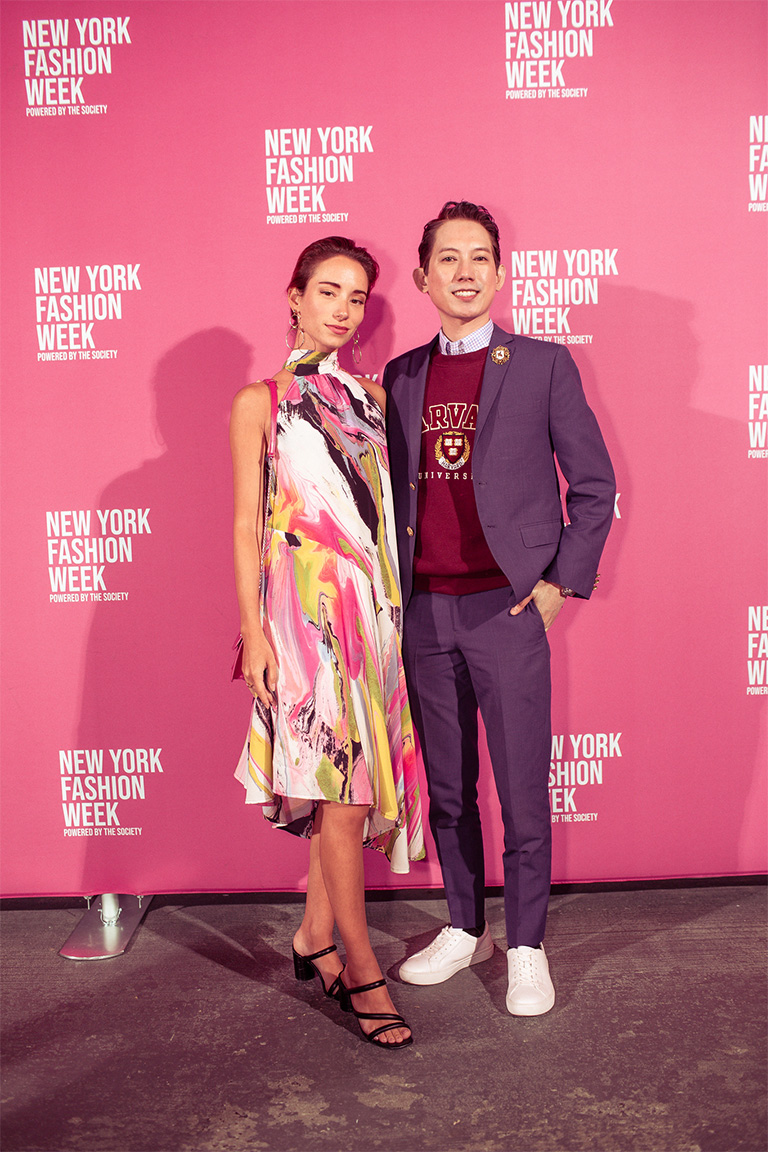
Now here’s a real-life example. Once, I was scheduled to attend a Fashion Week event immediately after a board meeting. I had to rep my very old world company, but in a way that was fun and less uptight.
So I took my three-piece suit (blue, Ralph Lauren), replaced the vest with a Harvard jumper, ditched the tie, and swapped my dress shoes for white leather sneakers. I also took a gold and enamel brooch with my family’s crest on it, and popped it onto my lapel.
After you’ve used this by-the-numbers strategy enough, you’ll be able to start instinctually putting outfits together that fit the “old money aesthetic” for the most part, but are also 100% authentically you as well.
Again, quality and aesthetic are more important than designers, but here are a few brands that tend to look the part:
- Brooks Brothers
- Hermes
- J.Press
- Ralph Lauren
- Barbour
- Drake’s
- N.Peal
- L.L. Bean
- Sperry
- Kiel James Patrick
- Burberry
- Chanel
- Brunello Cucinelli
- Vineyard Vines
- Rowing Blazers
- Bespoke men’s tailors like Gieves & Hawkes, Turnbull & Asser
Old Money Aesthetic Outfit Ideas
Here are a few combos you can try as we’ve curated them, or, feel free to mix and match some separates!
Outfit #1: “Pheasant Hunter”

If you were hunting pheasants, you’d probably wear something a bit sportier. That is, clothing appropriately-designed for the sport of hunting.
In any case, this outfit is perfectly aligned with the old money aesthetic, albeit with a fun and youthful twist.
Look #2: “On Holiday”
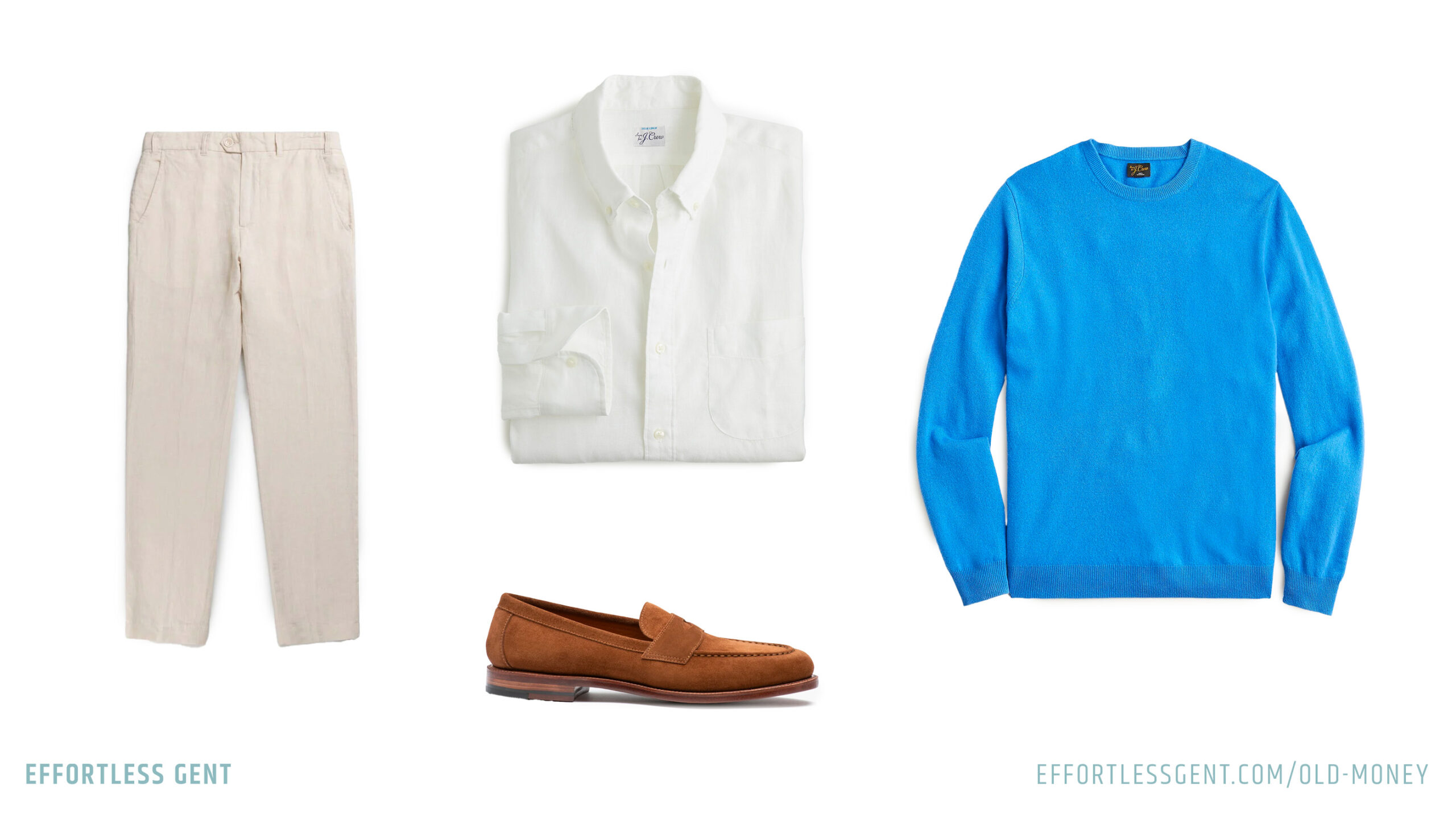
Being on holiday doesn’t mean running around in cargo shorts and aloha
The sweater goes over your shoulders, more as an accessory. Luckily this does function as an extra layer should the sea breeze get a bit chilly in the evening.
Outfit #3: “Summer Sporty”
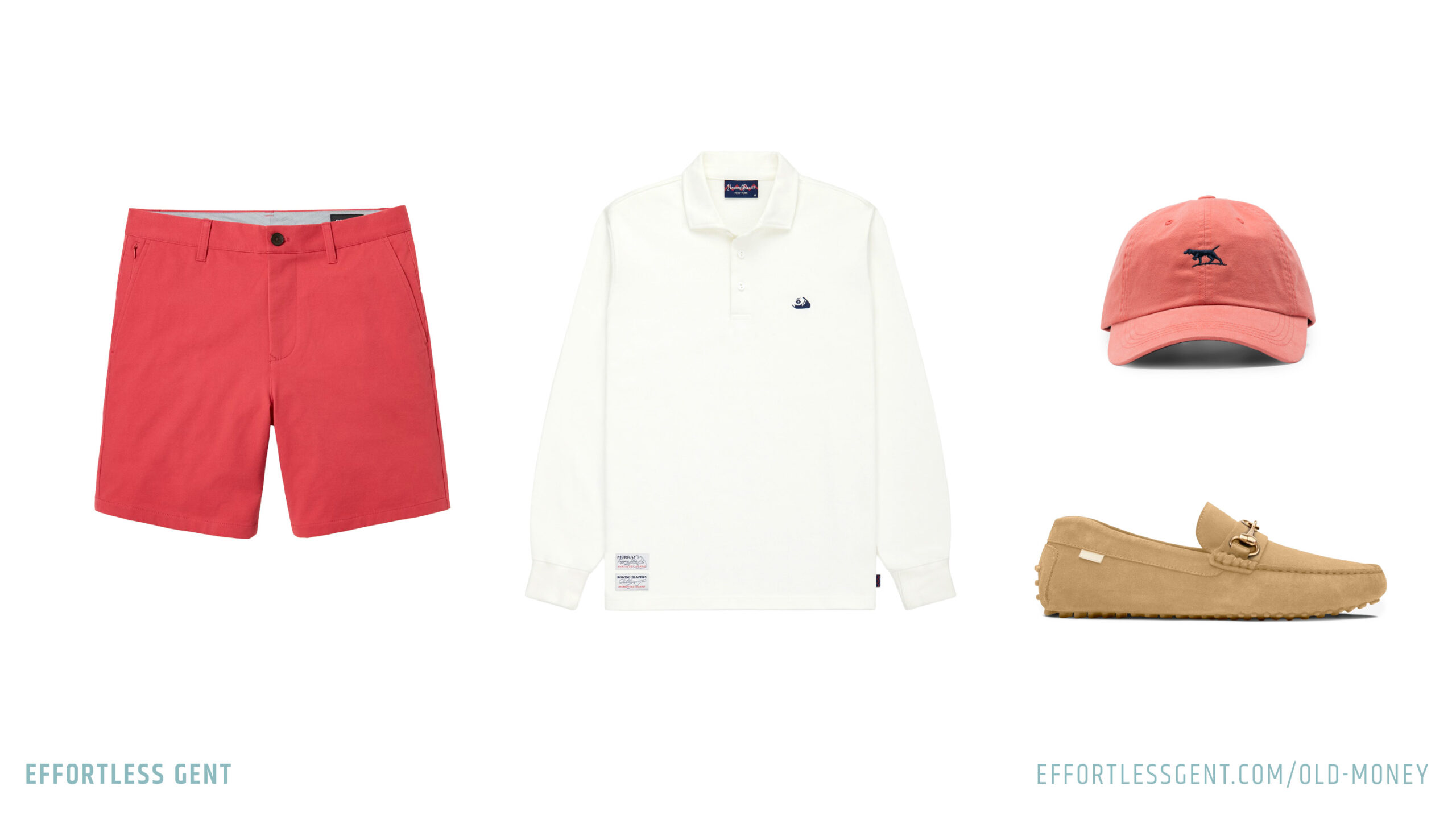
The classic rugby
Look #4: “Classics Professor”
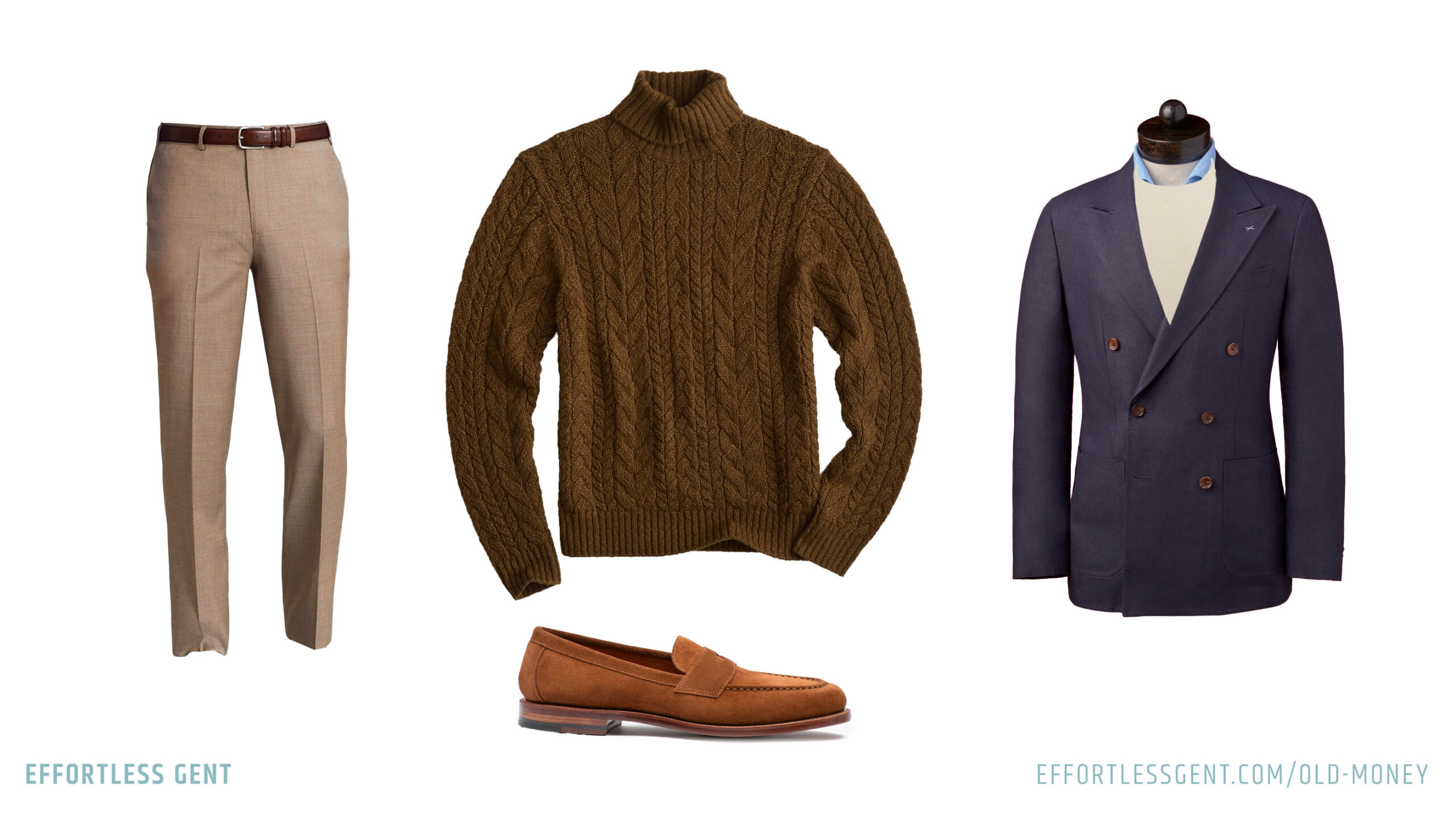
A great fall look, slightly professorial, and at the same time, very classy. In some circles, this may be considered dressy, but it’s a pretty standard casual to smart casual equivalent for the Old Money set.
FAQs About Old Money Aesthetic and Style
Why is it called old money aesthetic?
Old money aesthetic gets its name because it’s a general look rooted in the activities, both work and leisure, associated with old, established families. Other terms used with and related to old money include preppy, posh, and WASP.
How do you get the old money aesthetic?
By taking into account “old money activities” such as horse-riding, racquet sports, hunting, salon parties, and attending Ivy League schools, then dressing in an understated, elegant way that implies this lifestyle. This might mean tennis whites, cable-knit, cashmere, and so on.
What is the difference between old money and new money aesthetic?
Generally speaking, old money aesthetic is more tempered and follows sartorial rules, while new money aesthetic is flashier, arguably more fearless, but also often trend-focused. For example, the former is discreet about designer brands, but the latter isn’t.
How does old money actually dress?
Actual old money tends to dress very practically. They focus more on craft than fashion, and on quality over quantity.
The Real Old Money Aesthetic… THIS Is How It’s Done!
Hopefully this thorough article shines a more accurate light on what the old money aesthetic is actually like. Is the true-to-life style better or worse than you imagined?
If you have any questions, feel free to hit me up on Instagram!
The post The Ultimate Old Money Aesthetic Guide (What We Learned From Actual, Blue-Blooded, Old Money Folk) appeared first on Effortless Gent.
